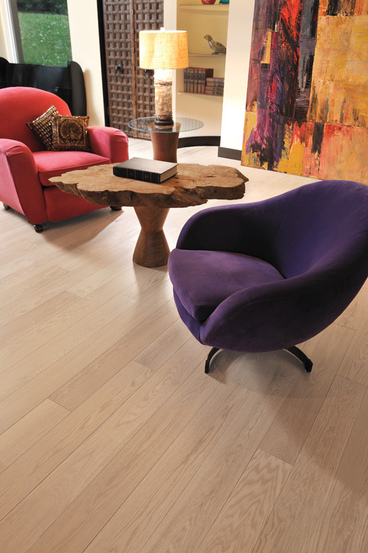Making Floors More
Accessible And Safer For Those With Special Needs

The simple things that healthy
individuals take for granted are often huge challenges for people with
permanent or temporary disabilities. What makes this worse is that buildings
and structures – even with the adherence to building codes for the disabled –
are still not inherently designed for their particular limitations. Homes for
the disabled and the elderly have to be retrofitted with special provisions
like ramps, wider hallways and doors,
and handlebars in various locations to make life more “normal” for their
residents. And with this, safety is of utmost importance.
The kind of flooring that you go with needs to be free from bulges and dips, offer adequate traction even for wheelchair wheels and crutches, and it must also be easy to clean to prevent microorganisms and allergens from building up. There is actually no clear winner as all flooring types have their respective pros and cons. The best way is to scan this list and see the qualities that are most important for you.
- Wooden floors are beautiful, sturdy, and relatively easy to maintain. The only downside to them is that they can get quite slippery. Especially if you wax often, the tendency of slippage can get quite high. This is not acceptable for houses with old people as a bad fall can easily break hips and send them to an agonizing stay in a hospital. You can lay down grip tape on certain areas and these are certainly effective. However, they are unsightly and will inevitably ruin the look of your floor. An alternative is to use area rugs that have been secured with carpet tape or adhesive. They will not only help with traction, they can soften the fall if a mishap does occur.
- You can have the entire room carpeted and this certainly takes care of the traction and cushioning problems you might have. The downside to a plush carpet is that it harbors germs and allergens even when vacuumed regularly. Those with chronic respiratory problems find their condition improves when they take out the carpeting. Also, unlike with wood flooring or tile flooring, fluids spilled onto carpets tend to create stains or unusual smells. These are particularly hard to remove especially when the carpet is laid down permanently. You can hide ugly stains temporarily by placing area rugs over them but make sure that the edges don’t trip any passersby. Also, wheelchairs can get bogged down in shaggy rugs so you have to take that into consideration.
- Vinyl squares are precut pieces that are assembled much like a giant jigsaw puzzle. It is a synthetic material that can come in different colors and patterns. Once laid down, it is easy to clean and will resist most spills and stains. It also prevents allergens from building up since it is non-porous. The only drawback to this kind of flooring is that the cheaper, thinner ones are rather easily damaged. They can’t stand up to the same level of wear and tear that wood or tile simply shrugs off.
The kind of flooring that you go with needs to be free from bulges and dips, offer adequate traction even for wheelchair wheels and crutches, and it must also be easy to clean to prevent microorganisms and allergens from building up. There is actually no clear winner as all flooring types have their respective pros and cons. The best way is to scan this list and see the qualities that are most important for you.
- Wooden floors are beautiful, sturdy, and relatively easy to maintain. The only downside to them is that they can get quite slippery. Especially if you wax often, the tendency of slippage can get quite high. This is not acceptable for houses with old people as a bad fall can easily break hips and send them to an agonizing stay in a hospital. You can lay down grip tape on certain areas and these are certainly effective. However, they are unsightly and will inevitably ruin the look of your floor. An alternative is to use area rugs that have been secured with carpet tape or adhesive. They will not only help with traction, they can soften the fall if a mishap does occur.
- You can have the entire room carpeted and this certainly takes care of the traction and cushioning problems you might have. The downside to a plush carpet is that it harbors germs and allergens even when vacuumed regularly. Those with chronic respiratory problems find their condition improves when they take out the carpeting. Also, unlike with wood flooring or tile flooring, fluids spilled onto carpets tend to create stains or unusual smells. These are particularly hard to remove especially when the carpet is laid down permanently. You can hide ugly stains temporarily by placing area rugs over them but make sure that the edges don’t trip any passersby. Also, wheelchairs can get bogged down in shaggy rugs so you have to take that into consideration.
- Vinyl squares are precut pieces that are assembled much like a giant jigsaw puzzle. It is a synthetic material that can come in different colors and patterns. Once laid down, it is easy to clean and will resist most spills and stains. It also prevents allergens from building up since it is non-porous. The only drawback to this kind of flooring is that the cheaper, thinner ones are rather easily damaged. They can’t stand up to the same level of wear and tear that wood or tile simply shrugs off.
